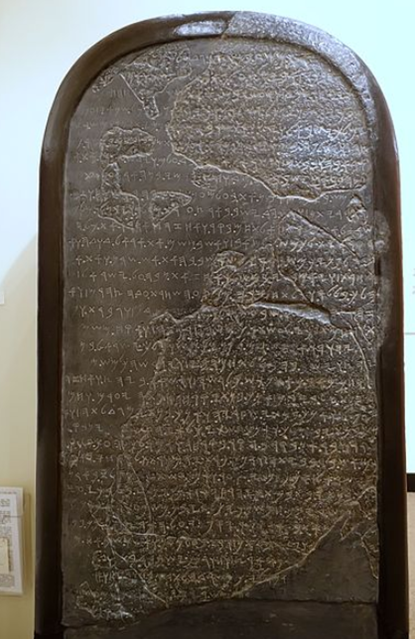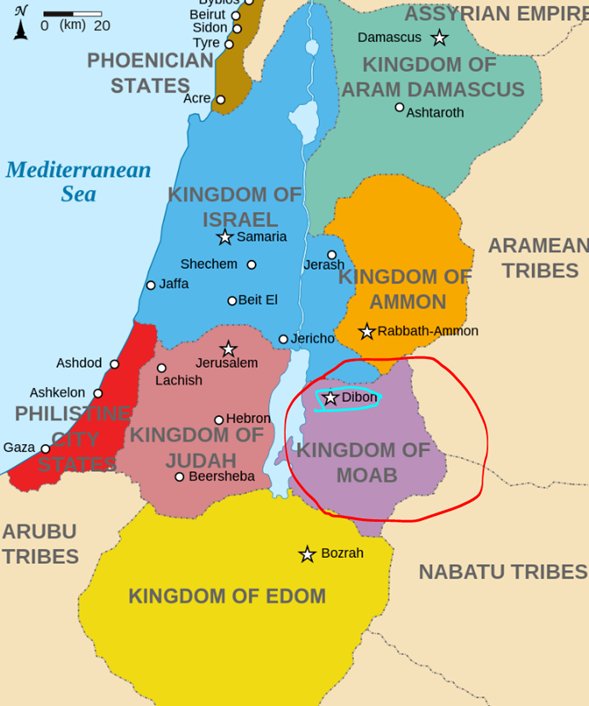
The Stele, discovered in 1868 near the Dead Sea, now sits in the Louvre in Paris

Photo Credit: Wikicommons-Public Domain
In may have taken 155 years, but researchers (using cutting edge digital imaging techniques) have concluded that an archeological stele (an ancient stone slab bearing a commemorative inscription) specifically references King David. The slab, also known as the Moabite Stone, references “The House of David” on its 31st line and “Altar of David” on the 12th line.
The Mesha Stele was discovered in 1868 in Jordan (about 15 miles east of the Dead Sea). In 1869 one of the local Bedouin tribes smashed the stone slab into many pieces, to protest against the ruling Ottoman empire who were forcing them to sell it to Europeans. Prior to it being broken, a rough paper-mache impression had been made of it, and most of the fragments were able to be put back together (although the damage made it very difficult to decipher parts of it.) Since 1873, the stone has been in the Louvre Museum in Paris.
The slab was written in the ancient (Semitic) Moabite language, spoken by the ancient nation mentioned many times in the Bible. This nation was at war with the Israelites for centuries (Ruth, of Biblical fame was a Moabite princess who converted to Judaism and was the great grandmother of King David, who Messiah will descend from). It was written by Moabite King Mesha, and describes his war with Israel. This war is mentioned in depth in the Bible (see 2 Kings 3) and specifically elaborates on Israel’s withdrawal from Moab which is mentioned in verse 27 which states “And he took his first-born who would resign after him, and brought him up for a burnt-offering on the wall. And there was great wrath upon Israel, and they withdrew from him and returned to the land.”

Photo Credit: Kingdoms_of_Israel_and_Judah_map_830.svg: *Oldtidens_Israel_&_Judea.svg: FinnWikiNo – CC BY-SA 3.0
Much damage had been done to some of the letters on the stone where David is mentioned. For decades archeologists in the Biblical minimalist camp tried to claim that the text doesn’t mention him, but rather someone else whose name is also spelled with the same letters but pronounced differently. Although farfetched and clearly fitting confirmation bias, their claims can now be completely discarded due to advances in technologies. Using Reflectance Transformation Imaging (where numerous high end digital images are taken of an artifact from various angles and then combined) on both the stone and on the paper-mache, the researchers are finally able to put the debate to rest. It is now hoped that with improvements to imaging and technology, other ancient texts can now be deciphered.

Photo Credit: Oren Rozen – CC BY-SA 4.0
The Tel Dan Stele, currently displayed at the Israel Museum, famously also mentions “The House of David (and corresponds with the Biblical events mentioned in 2 Kings 8: 28-29).
Please visit the author’s Israel tour guiding site: https://guidedtoursofisrael.com
(All images used are either free usage or properly licensed by the author)















